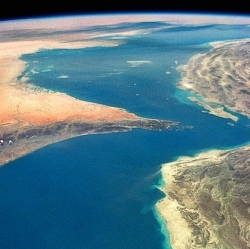
On his 108-minute flight in 1961, the Soviet cosmonaut Yuri Gagarin, the first human in space, reached a peak altitude of 327 kilometres (203 miles), after blasting off the planet atop a mighty Vostok rocket. After launch shook his tiny capsule violently, Gagarin experienced the feeling of weightlessness, and saw the curvature of the Earth first-hand.
By all accounts, he crossed the mysterious border between the Earth and space. Or did he? It has been more than half a century since Gagarin’s historic journey, but there is still no universally accepted definition of where space begins. The International Astronautical Federation marks the beginning of space, for aviation purposes, at the 100-kilometre mark, where the Earth’s atmosphere is so negligible that conventional aircraft cannot travel fast enough to generate aerodynamic lift.
There are other, more arbitrary numbers: In the 1960s, eight US pilots earned their astronaut wings by flying the arrow-shaped X-15 rocket plane above 80 kilometres. In the US, this standard still applies, meaning that any American who flies on one of Virgin Galactic’s private spacecraft will officially become an astronaut.
Recent scientific discoveries have further muddled our terrestrial-celestial border confusion. In 2009, an instrument called the Suprathermal Ion Imager (SII) pinpointed 118 kilometres as the point at which charged particles from space begin to overwhelm the relatively mild particle flow of the Earth’s upper atmosphere.
That was the point, researchers argued, where space really begins. Headlines hailing the discovery of the ‘edge of space’ briefly splashed across the media, but the attendant stories were hesitant, bracketing any notions of finality with alternative edge-of-space definitions.
